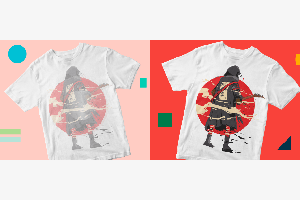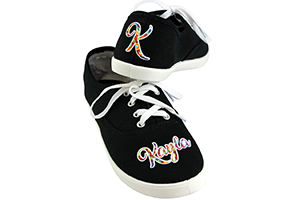June 25, 2020
My industry experience has led me to one realization about many decorated-apparel shops: They don’t charge enough money for their offerings. This usually is the result of fear that they won’t land a job if they charge too much. This, in turn, leads to the dangerous question: “What’s the lowest price I can sell my products for?”
Don’t fall into that trap. Successful companies are rarely — if ever — the cheapest options. Thus, the question should be: “What is the most I can charge for my products?”
You’re probably thinking, “That sounds nice, but how am I supposed to do that when my competitors are undercutting me everyday?” First, reevaluate what you sell and to whom you sell it. Any sublimator can put a logo on a mug; thus, its value decreases because it’s so readily available.
In fact, it becomes nothing more than a mug with a graphic. Thus, the customer’s perception is that it doesn’t have a high value and that, in turn, sets the expectation of what he should pay for it.
Your job is to raise the perceived value of everything you sell. A big part of that comes from how you position products when communicating with potential customers. To better illustrate my points, let’s do some quick perception tests.
Put a Spin on It
What do you see in Figure 1? A sublimated coffee mug? It’s actually a billboard for promoting a business. Put simply, it’s advertising.
We often don’t place the appropriate emphasis on what we sell. A simple mug can seem boring; the form of decoration means nothing to the customer. Advertising, on the other hand, is an essential part of growing a business or promoting an organization.
Marketers call this “spin.” In other words, you’re elevating an everyday item to superstar status. Customers need a good reason to spend money with you, so you must give them one. Simply stating that you produce quality products at a great price usually isn’t an exciting sales approach.
For example, I could walk into a tackle shop and tell the owner, “Hi, I’m Jimmy and I own a sublimation business. We easily can put your business name on a variety of products, including caps, shirts, jackets, etc. We have great quality and competitive pricing.”
How exciting is that? You just said the same thing any decorator would say, but you didn’t give the customer any real incentive to learn more. Everything you say and do must be focused on one thing: filling a customer’s need.
Getting in the Spirit
What do you see in Figure 2? A sublimated mouse pad? Actually, this is considered a spirit product, which sounds much more interesting than “printed school stuff.”
Spirit merchandise is big business, as students, parents, family, friends and alumni freely spend money on products that showcase their school or team spirit. Your creativity in promoting the concept will determine the success of your sales efforts. It’s a proven fact that this is a thriving marketplace, but the trick is how you get involved.
Remember that schools have few dollars available for purchasing spirit products. Thus, offer a fundraising program to support groups — the PTA, athletic and band booster organizations, etc. — that involves selling spirit products at sports functions and special events. You provide the product while they sell it.
Selling Personalization
At first glance, you may see a sublimated photo panel in Figure 3, but it’s actually a personalized product. Such products are all about capturing and preserving life’s important moments and priceless memories.
This is an important sales and marketing concept called “packaging.” If the ordinary is elevated to the extraordinary, coupled with a touch of emotion and excitement, the perceived value — and profit margins — are increased.
Melanie Coakley of Signature Designs understands this concept all too well and applies it to everything she does. “I had a customer come in one day who wanted a poem that her husband had written to her about their unborn baby girl embroidered on a piece of fabric, which would be framed and hung in the [baby’s] nursery,” she recalls.
The job wasn’t terribly difficult and, if priced based on the idea of simply being a decorated piece of fabric, she could’ve charged a mere $15. However, Coakley recognized the poem’s deep emotional meaning, which was almost to the point of being spiritual. Thus, the job wasn’t about decoration; it was about preserving an important moment in the customer’s life.
What would you have charged for this job? Coakley priced the job at $150 and got it.
The idea of packaging your products so that the value is enhanced applies to everything you do. This, in turn, can have a profound effect on whether you are regularly gaining or losing jobs.
Here’s the relevant point: You sell products that use embellishment to deliver a message and enhance value. Everything you do in terms of sales and marketing should focus on increasing their perceived value.
To do this well, you must fully understand the markets you serve so that you also can understand their needs. This enables you to choose the right products and pitches that will support your pricing.
Also, remember to avoid describing your products in mundane terms. Get the customer excited by being excited. Always focus on presenting your products in the most unique way.
For example, never refer to a poly-performance T-shirt as just a T-shirt. Unfortunately, most consumers have a low perceived value of T-shirts. That’s because, at some point in their lives, they probably bought a lightweight 50/50 T-shirt with single-color printing for $6. By comparison, a poly-performance T-shirt usually has a wholesale price of about $6, just for the blank shirt, which is a problem.
The solution is to avoid initially using the word T-shirt when describing the product. Focus on the term “performance product.” Talk about the shirt’s moisture-wicking properties and the fact that sublimation will not fade, crack or peel when laundered. Use terms or brands that are synonymous with high value — like Under Armour. What you say will have an effect on how customers perceive the product and hopefully will make them more comfortable with your pricing.
Your pricing markups will be driven by one simple premise: customer perception of value. Markups are not a formula, although one can be used to calculate them once you understand your customer. Everything revolves around the client’s perception. If you don’t know your customer and market, you always will struggle with markups.
Consider focusing your efforts on specific markets rather than trying to be a jack of all-trades. More than any other method, this will get you where you need to be faster and more effectively. Remember this simple phrase: Your product is only worth what someone will pay for it.
Award-winning author and international speaker Jimmy Lamb has more than 25 years of apparel-decoration experience. He currently is manager of communications for Sawgrass Technologies, Charleston, S.C. For more information or to comment on this article, email Jimmy at jlamb@sawgrassink.com.
Location, Location, Location
If you are offering a line of caps, shirts, jackets, etc., with tourist designs and location names, you are in the business of selling souvenirs — even memories, for that matter. People take great pride in being able to say, “Been there, done that,” which is the purpose of a souvenir product.
For example, Hard Rock Café and Planet Hollywood have built a business around selling souvenir products. In fact, you probably have made the mistake of thinking they were restaurants. They did, too — in the beginning. However, they found, as you will, that it’s not their logos that sell; rather, it’s the location that’s printed under the logo. Why? It’s because tourists are all about location.
April 12, 2023 | Sublimation
As you work toward becoming an experienced dye-sublimation apparel, general merch or customized promotional items decorator, you may come across one or more obstacles, like your transfers coming out blurry, dull or faded.
FULL STORY
June 1, 2022 | Sublimation
How many times have you wished that you could sublimate a product that wasn’t polymer-based or polymer-coated.
FULL STORY
October 8, 2021 | Sublimation
I think the philosophy of lagniappe should be taught at every school and practiced by every business. A French word meaning “unexpected extra gift,” lagniappe often is used in Louisiana. In fact, sublimation decoration is a fantastic example of this.
FULL STORY






